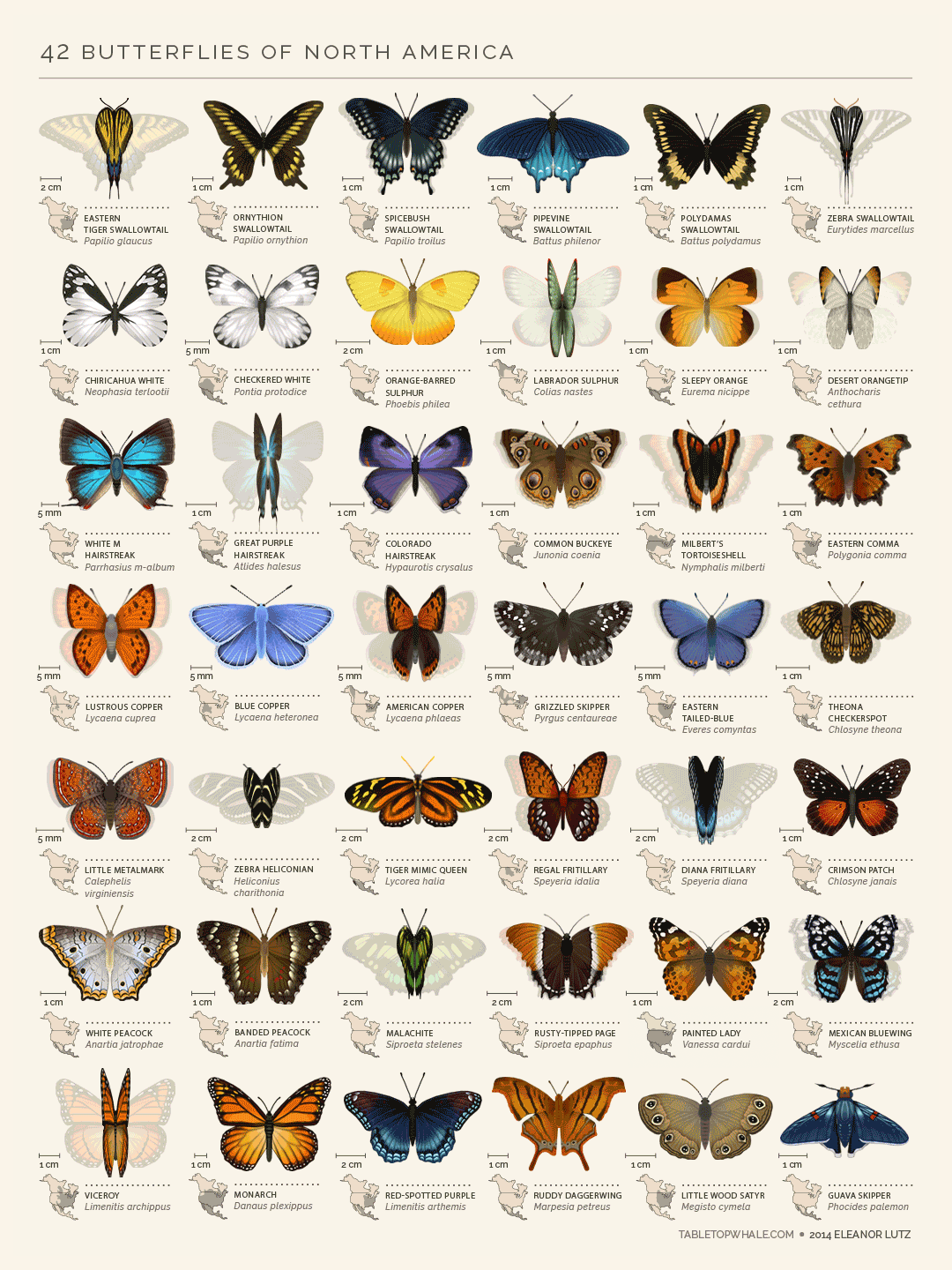Numbers, data, graphics, charts, trends – humanity has created so many ways to quantify the world and its inhabitants. Sometimes we need to take a step back, enjoy a deep breath, and admire the awe-inspiring kaleidoscope of beauty that our planet provides. Today’s visualization comes from Tabletop Whale – it features 42 breathtaking animations of North American butterflies!
So vibrant and magical! This got me wondering – why are butterfly wings so colorful? Here’s how the Natural History Museum of the United Kingdom explains it: “There are more than 18,000 named butterfly species on the planet today, and about 140,000 different moth species. All of them evolved from a common ancestor that lived more than 225 million years ago. From that one ancestor, a parade of colours and shapes have burst forth, populating forests, savannahs, fields and gardens with patterns and textures. Each species has developed a strategy to make the most of their biggest asset and defining feature: their scaly wings. Lepidoptera rely on colour in every aspect of their lives: sparring, courting, mating and hiding.”
So essentially, butterflies have developed a dazzling array of patterns to suit their environments – the diversity of Earth’s ecosystems has compelled the development of an abundance of colors and patterns. As a form of defense against predators, the owl butterfly developed an intimidating spot resembling an owl eye on its wings. Whether or not this owl mimicry is intentional is a topic of hot debate among scientists! Some butterflies are not so flashy; the Indian leaf butterfly’s wings imitate dried foliage, making it nearly impossible to spot when nestled among leaves. This camouflage is so compelling that even birds often completely overlook these hidden creatures. The gorgeous wings we get to admire today have been crafted by natural selection over the course of millions of years! With this knowledge, the regional markers on the chart add an extra element of fun. What are the factors in those regions that might have influenced the wing appearance of these butterflies?
How many of these butterflies have you seen or photographed? We would love to see your photos in the comments below!


Leave a Reply